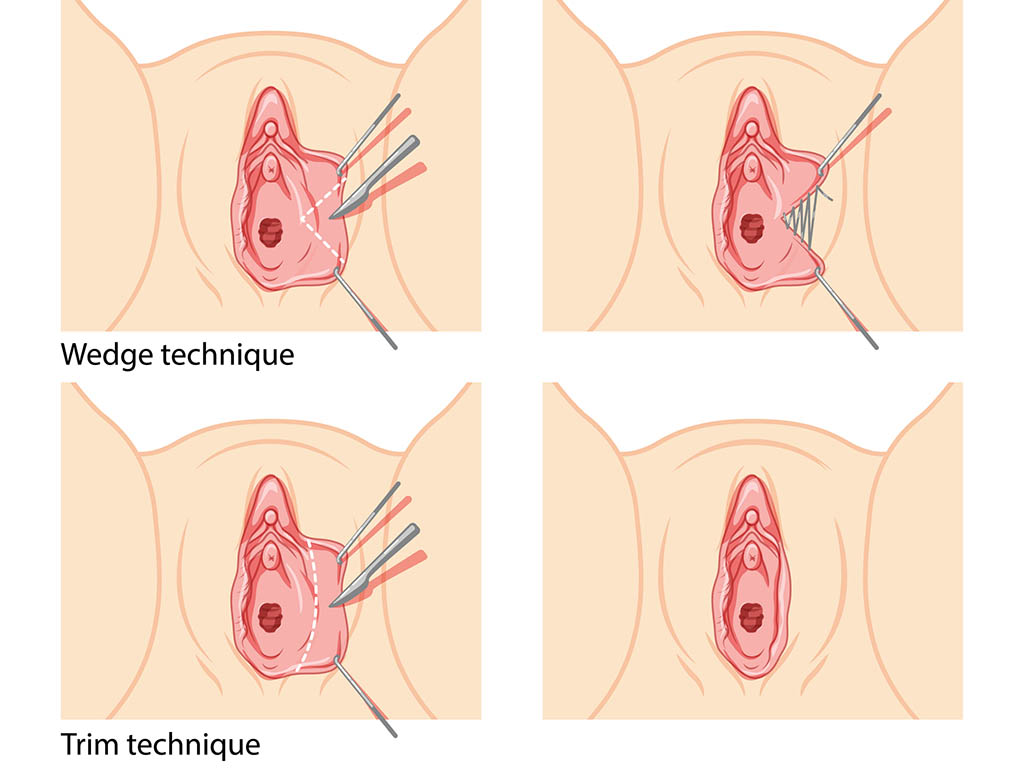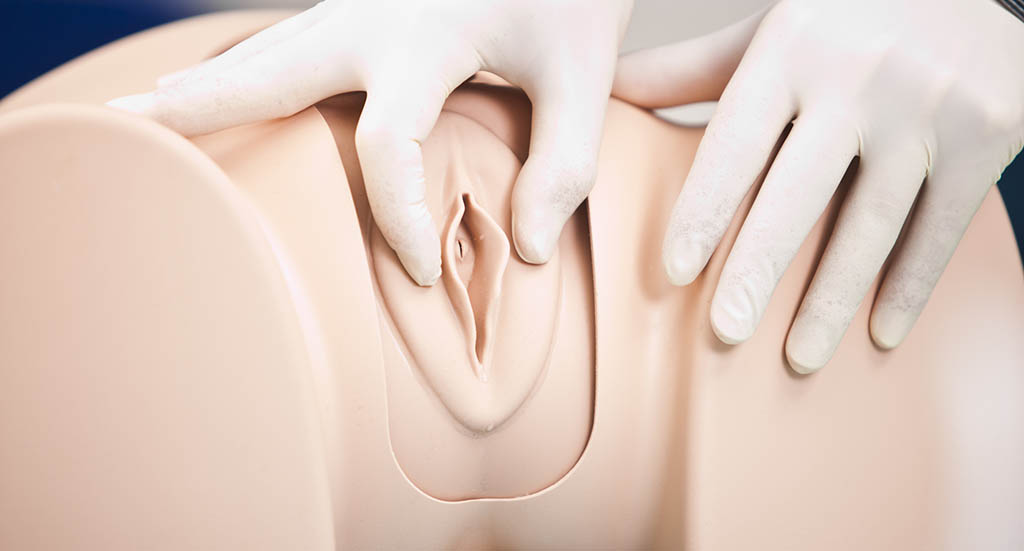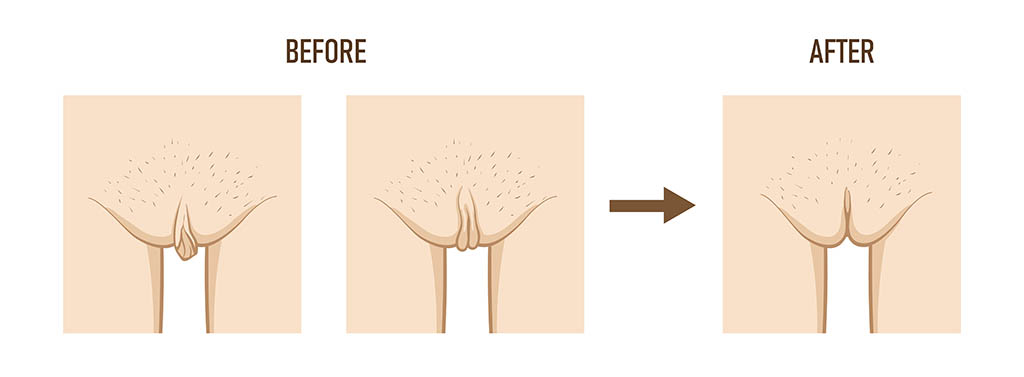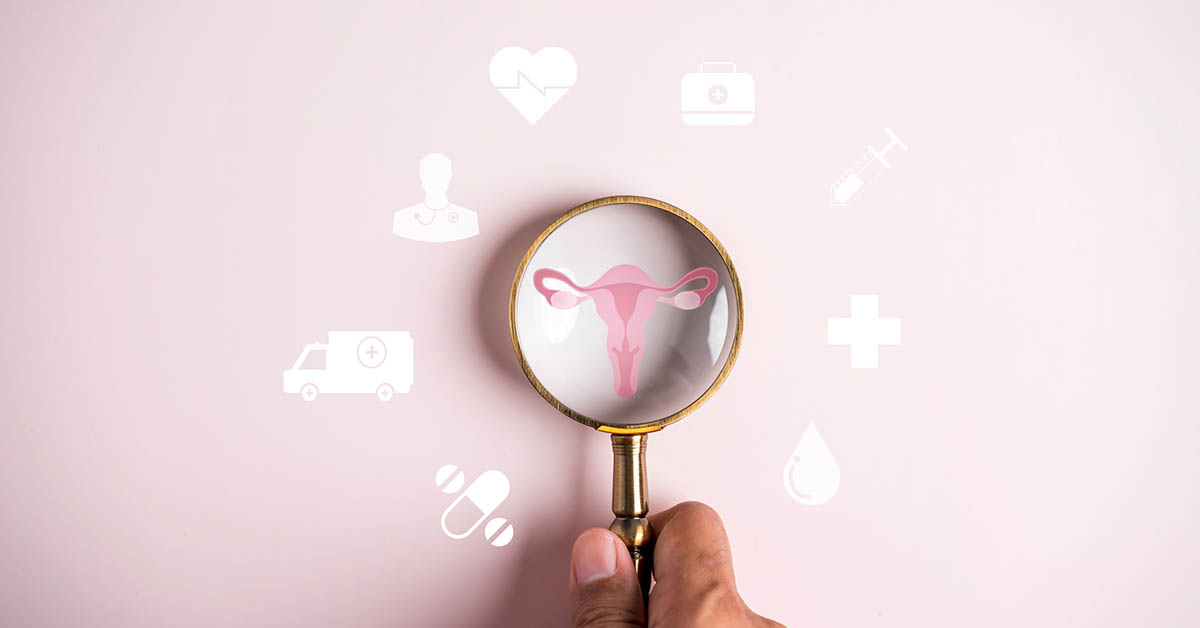Labiaplasty is a surgical procedure that has become increasingly popular, particularly among women seeking to address both functional and aesthetic concerns related to their external genitalia1. This procedure can profoundly improve a woman’s quality of life by alleviating discomfort, improving confidence, and enhancing personal well-being.
This article explores the various aspects of labiaplasty in detail, covering its purpose, reasons for undergoing the surgery, and key aspects for those considering it.
What Is a Labiaplasty?
Labiaplasty is a surgical procedure performed to reshape or reduce the size of the labia minora—the inner lips of the vulva. It is commonly performed to address functional issues, aesthetic concerns, or a combination of both.

Techniques Used for Labiaplasty: Trim and Wedge Methods
Labiaplasty is typically performed using two primary surgical techniques, each tailored to meet the patient’s unique goals and anatomical needs:
- Trim Technique: This is the most commonly performed method. It involves removing excess tissue along the outer edges of the labia minora. This technique is ideal for individuals seeking to reduce labial protrusion and achieve a smoother, more streamlined appearance. The trim method can also correct discoloration along the edges, often creating a uniform look.
- Wedge Technique: In this method, a wedge-shaped portion of tissue is removed from the central area of the labia minora, preserving the natural edge of the labia. This approach is preferred for patients who want to maintain the natural contour of their labia while reducing bulk. The wedge technique minimizes visible scarring and is particularly effective for addressing asymmetry and significant enlargement.
Both these techniques aim to restore comfort and improve the appearance of the labia while ensuring the procedure is tailored to the individual’s unique anatomy and goals.
What Is the Purpose of a Labiaplasty?

The primary purpose of labiaplasty is to address physical discomfort, enhance hygiene, improve aesthetic appearance, and boost psychological well-being2. While some people may perceive it as a purely cosmetic procedure, labiaplasty is often performed for functional reasons. The key purposes include:
- Reducing discomfort caused by enlarged labia
- Addressing hygiene challenges associated with excess tissue
- Enhancing sexual satisfaction by eliminating pain during intercourse
- Restoring confidence by creating symmetry and improving appearance
Why Do People Get Labiaplasty?
The reasons for seeking labiaplasty vary widely among individuals. They can generally be categorized into medical, cosmetic, psychological, and practical considerations.
Medical Reasons for Labiaplasty

1. Physical Discomfort
Enlarged or asymmetrical labia can lead to significant physical discomfort, particularly during activities such as walking, cycling, or exercising. Women often report issues such as:
- Friction and Chafing: Prolonged activity can cause irritation and soreness.
- Pinching and Pressure: Tight clothing or underwear can compress the labia, leading to discomfort.
How Labiaplasty Helps: Surgically reducing the size of the labia alleviates pressure and minimizes irritation, allowing for greater ease of movement and physical activity.
2. Hygiene Concerns
Excess skin around the vagina can trap moisture, sweat, and bacteria, leading to an increased risk of infections such as:
- Urinary tract infections (UTIs)
- Yeast infections
How Labiaplasty Helps: By reducing the amount of excess tissue, labiaplasty makes it easier to maintain hygiene and lowers the risk of recurrent infections.
3. Sexual Discomfort
Large or uneven labia can twist, pinch, or pull during sexual activity, causing pain or discomfort that negatively affects intimacy.
How Labiaplasty Helps: By reshaping the labia, the surgery eliminates discomfort during intercourse, potentially enhancing sexual satisfaction and confidence.
Cosmetic Reasons for Labiaplasty

Improving Appearance
The size, shape, and symmetry of the labia minora vary widely among individuals. Some women feel self-conscious about the appearance of their labia, particularly if:
- The labia protrude beyond the labia majora.
- There is significant asymmetry between the two sides.
How Labiaplasty Helps: Labiaplasty addresses these concerns by removing extra skin around vagina and reshaping the labia to achieve a more balanced and proportionate appearance. Many women report increased confidence in their bodies, particularly during intimate moments or while wearing tight-fitting clothing such as swimsuits or leggings.
Psychological and Emotional Reasons for Labiaplasty

Boosting Self-Esteem
Persistent dissatisfaction with the appearance of one’s labia can affect mental health, leading to feelings of embarrassment or anxiety. This emotional distress may influence personal relationships or cause women to avoid certain activities.
How Labiaplasty Helps: By addressing these concerns, labiaplasty can improve self-esteem and emotional well-being, empowering women to feel more comfortable and confident in their daily lives3.
Do I Need a Labiaplasty?
Deciding whether to undergo labiaplasty depends on your unique circumstances. It is important to consider the following:
- Physical Symptoms: Do you experience discomfort during physical activities or while wearing certain clothing?
- Hygiene Challenges: Have you noticed recurring infections or difficulty maintaining cleanliness due to excess labial tissue?
- Emotional Impact: Are you self-conscious about the appearance of your labia, and does it affect your confidence or relationships?
A consultation with a qualified surgeon can help determine whether labiaplasty is a suitable option for you.
Addressing Excess Skin Around the Vagina

Excess skin around the vaginal area can develop for various reasons, including genetics, aging, or childbirth. This excess tissue may cause both functional and aesthetic challenges. Labiaplasty provides a solution by removing redundant tissue, alleviating discomfort, and restoring a more streamlined appearance.
Risks and Considerations Associated With Labiaplasty
As with any surgical procedure, labiaplasty carries potential risks, including:
- Infection
- Scarring
- Temporary or permanent changes in sensation
- Asymmetry requiring revision surgery
Choosing a skilled, board-certified surgeon significantly reduces these risks and ensures optimal outcomes.
Choose The Right Surgeon For Your Labiaplasty

Labiaplasty is a transformative procedure that addresses a wide range of physical, emotional, and aesthetic concerns. Whether driven by discomfort, hygiene challenges, or self-confidence issues, this surgery offers women an opportunity to enhance their quality of life. If you are considering labiaplasty, consult a qualified surgeon to discuss your goals and expectations. A personalized approach will ensure the best possible outcome for your unique needs.
At Alinea Labiaplasty & Vaginoplasty NJ, we help our patients understand the purpose and benefits of labiaplasty so they can make an informed decision about whether it is the right choice. This procedure is more than cosmetic—it is a step toward greater comfort, confidence, and well-being.
References
- Furnas HJ, Canales FL, Pedreira RA, Comer C, Lin SJ, Banwell PE. The Safe Practice of Female Genital Plastic Surgery. Plast Reconstr Surg Glob Open. 2021 Jul 6;9(7):e3660. doi: 10.1097/GOX.0000000000003660. PMID: 34249585; PMCID: PMC8263325.
- Wang SJ, Xu K, Chen XL, Shi BH, Wang H, Wu LH, Chen CY. A Retrospective Study for Labia Minora Reduction by Serrated-shaped Resection. Plast Reconstr Surg Glob Open. 2024 Mar 1;12(3):e5634. doi: 10.1097/GOX.0000000000005634. PMID: 38435463; PMCID: PMC10906644.
- Sharp, G., Maynard, P., Hudaib, A., Hamori, C. A., Oates, J., Kulkarni, J., & Sarwer, D. B. (2020). Do genital cosmetic procedures Improve Women’s Self-Esteem? A Systematic Review and Meta-Analysis. Aesthetic Surgery Journal, 40(10), 1143–1151. https://doi.org/10.1093/asj/sjaa038







